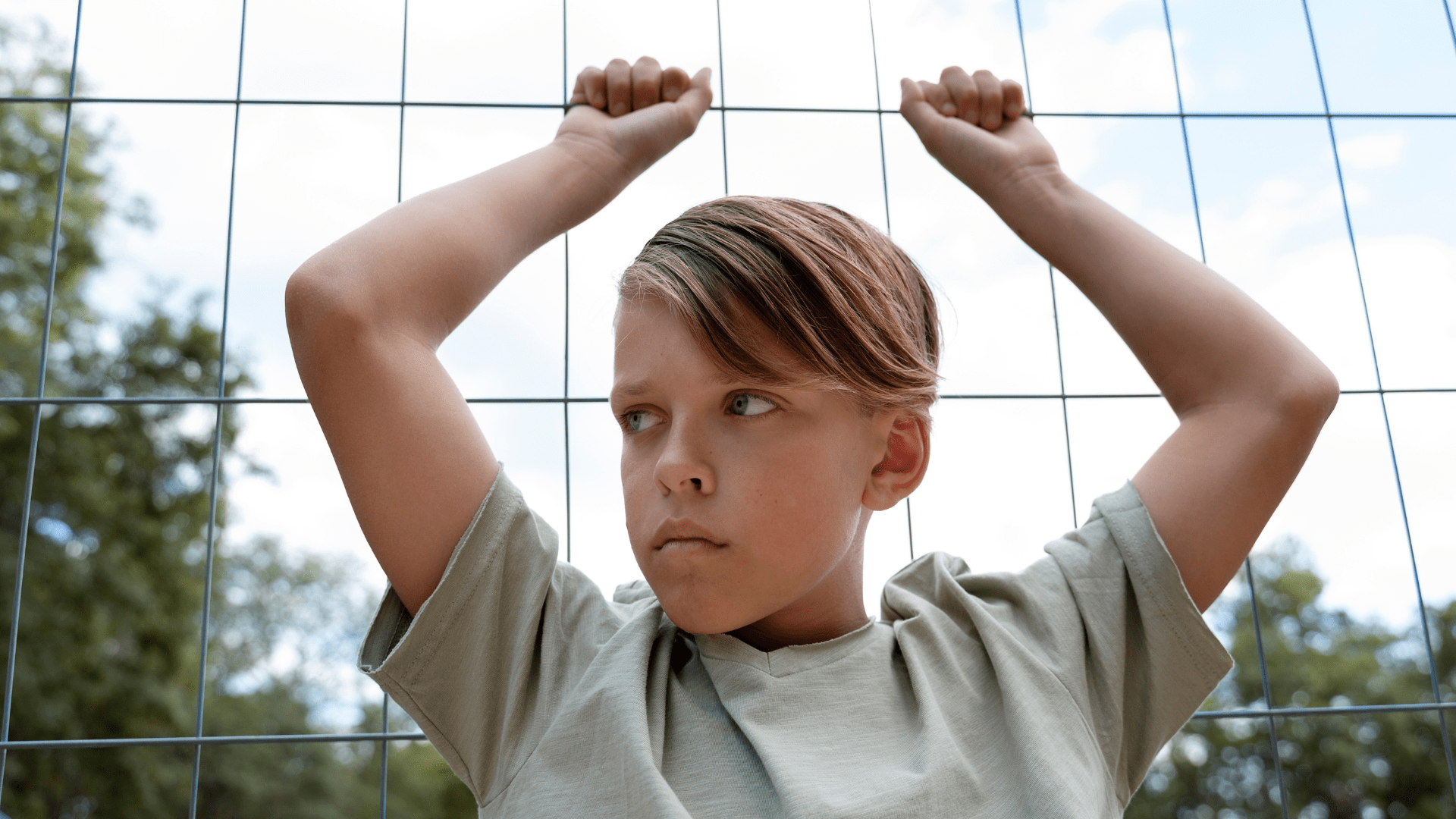Every child deserves to grow up in a safe and nurturing environment, but unfortunately, many children today experience neglect, physical harm, emotional abuse, or sexual exploitation.
April marks National Child Abuse Prevention Month, an initiative dedicated to raising awareness about the realities of child abuse. By recognizing the warning signs of abuse and being vigilant and informed, we can all play a role in ensuring children are protected and allowed to thrive.
How Can You Recognize the Signs of Child Abuse?
Child abuse manifests in many ways, including physical, emotional, sexual abuse, and neglect. While some signs are apparent, others are more subtle and often overlooked.
It’s essential for everyone – teachers, healthcare providers, coaches, and other community members at large – to be vigilant, learn to recognize signs, and report findings to authorities when they see them.
Physical Abuse
Physical abuse occurs when a child is intentionally harmed through hitting, burning, shaking, or another violent act. Physical abuse can result in:
- Physical signs
Children suffering from physical abuse may exhibit unexplained bruises, fractures, or cuts. When asked about their injuries, the child’s explanations are often inconsistent, unconvincing, or change over time. - Behavioral signs
A physically abused child often exhibits behavioral changes. The child may become unusually fearful of adults or flinch when someone raises a hand. They might wear inappropriate clothing such as long sleeves in the middle of summer to hide their injuries. Reluctance to go home after school or extracurricular activities is also a red flag, signaling that home is not a safe environment for them. - Emotional signs
Children who experience physical abuse often develop new fears or become withdrawn or anxious. Their sleeping patterns can be disrupted, resulting in nightmares, and their academic performance may also decline as they struggle with concentration in school.
Emotional Abuse
While less obvious than physical abuse, emotional abuse can be just as damaging to a child. Emotional abuse includes behaviors such as constant criticism, rejection, humiliation, or threats that undermine the child’s confidence and sense of self-worth.
Children who experience emotional abuse often struggle with
- Self-esteem issues
- Withdrawal from social interactions
- Anxiety
- Drastic mood swings
- Developmental regression — such as bed wetting — after they have outgrown them
- Excessive fearfulness
- An overt eagerness to please others to avoid upsetting adults around them
Over time, the symptoms of emotional abuse can become more pronounced. Emotionally abused children may exhibit unusual anger, frustration, or extreme shyness outside the norm. Conversely, they may become overly friendly and attached to strangers or display excessive obedience. Unfortunately, many emotionally abused children go on to cope with their distress through self-harm, drug or alcohol use, or even suicide attempts.
Sexual Abuse
One of the most devastating forms of child abuse, sexual abuse involves any form of sexual contact or exploitation of a child.
Signs of sexual abuse can be physical, such as difficulty walking or sitting, pain in the genital area, or sudden changes in their hygiene habits. However, emotional and behavioral indicators are often the most telling.
Sexually abused children may display inappropriate sexual behaviors, exhibiting knowledge or actions beyond what is normal for their age. They may withdraw from social interaction, have difficulty sleeping, or experience drastic changes in appetite. Unfortunately, survivors of childhood sexual abuse often go on to struggle with guilt, shame, or self-blame, making it even more critical for trusted adults to recognize signs and take action.
Neglect
The most common form of child abuse, neglect happens when a caregiver fails to meet a child’s basic needs for food, shelter, medical care, education, or emotional support. Unlike physical abuse, neglect may not involve direct harm, but the long-term consequences can be just as damaging.
Signs of neglect include
- Persistent hunger
- Malnutrition
- Noticeable weight loss
- Wearing ill-fitting or inappropriate clothing
- Suffering from untreated medical conditions
- A lack of personal hygiene
- Frequent school absences
Neglected children may develop attachment issues, struggling to trust adults or form healthy relationships due to a lack of consistent care. Eating habits may also change drastically, with some children losing interest in food or coping with their emotions through excessive eating.
The Importance of Awareness and Early Intervention
Recognizing the signs of child abuse is only the first step. Taking action is crucial to ensure that children in dangerous situations receive the protection and support they need and deserve.
Whether intervention involves reporting suspected abuse, advocating for stronger legal protections, or personally offering support to a child in need, it can make a life-changing difference to an abused child. Abuse thrives in silence, and by staying informed, vigilant, and proactive, we can collectively work to break the cycle and create a safer environment for all children.
If you suspect a child you know is being harmed, do not hesitate to reach out to authorities or organizations dedicated to child protection. Your awareness and willingness to act could save a life.
Schedule your free meeting with our team today to see if our Lawyers can help you.
How Family Law Protects Children
Family law is designed to uphold the best interest of the child, ensuring that every legal decision prioritizes children’s safety, stability, and emotional well-being. Consequently, protecting children from abuse and neglect is one of the hallmarks of family law.
The family law system isn’t merely reactive but also proactive in establishing safeguards that prevent harm and promote stable and nurturing environments. The court system, social services, and legal professionals all work together to uphold the best interests of children, ensuring they are kept from or removed from dangerous environments so they can receive the care and support they need to thrive.
Child Custody and the Best Interest of the Child Standard
In custody cases, courts assess a variety of factors to determine the safest and most supportive living arrangement for a child. This is referred to as the best interest of the child standard. Factors the court will consider when making custody decisions include:
- The child’s emotional and physical well-being
- The ability of each parent to provide a stable and nurturing environment
- The presence of any abuse, neglect, or domestic violence in a parent’s household
If evidence of abuse exists, courts may award sole custody to one parent, placing restrictions on the abusive parent’s visitation rights or require supervised visits to ensure the child’s safety. In extreme cases, parental rights may be terminated altogether.
Additionally, courts may modify existing custody orders and visitation agreements if evidence of abuse or neglect emerges later. If an abusive parent was previously granted custody or visitation rights and later found to pose a danger to the child, the court can intervene to adjust custody arrangements to prioritize the child’s safety.
Child Protective Services (CPS) and Legal Intervention
Child Protective Services (CPS) plays a vital role in investigating reports of child abuse and neglect. When allegations are substantiated, CPS may take several actions, including:
- Removing the child from a dangerous environment
- Coordinating with law enforcement to pursue charges against abusers
- Arranging temporary or long-term foster care placements
- Recommending court-appointed supervision or parental rehabilitation programs
CPS works closely with the family court system to determine the most appropriate course of action to protect the child while offering support services aimed at family reunification whenever possible.
Protective and Restraining Orders
To further ensure a child’s safety, courts can issue protective (restraining) orders against an abusive parent or caregiver.
Protective orders are a crucial tool in family law that allows immediate and enforceable action when abuse or threats are present. By establishing clear boundaries, these emergency, temporary, or long-term court orders prevent further harm to the child and the non-abusive parent.
Removal From an Abusive Home
If Child Protective Services has determined that child abuse or neglect has occurred, or if there is a risk of harm, they may file a petition with the court to have an abused child removed from the home. If the court finds evidence that the conditions in the home are unsafe, the child may be placed in a foster home or with relatives until permanent placement has been found or the child can be safely returned to the home.
Appointment of a Guardian Ad Litem
Courts often appoint a Guardian ad Litem (GAL) to represent the child in cases of suspected abuse. The GAL is a trained advocate – typically a social worker or attorney – whose role is to conduct an independent investigation and make recommendations to the court. The Guardian ad Litem is focused solely on the child’s best interest and gives them a voice in an intimidating and complex court process.
The GAL will interview the child, parents, teachers, medical professionals, and others involved in the child’s life and review school and medical records and other documents that can shed light on the situation. A GAL’s report provides the court with a clear and objective account of the child’s needs and vulnerabilities. Consequently, it can influence the court’s decisions on custody, visitation, protective orders, or services such as counseling for the family.
How We Can Work Together to Prevent Child Abuse
April serves as a critical reminder through National Child Abuse Prevention Month that protecting children is a shared responsibility – and one that the family legal system upholds with unwavering dedication.
Family law is a powerful and compassionate tool designed to protect children from harm and support families through some of the most difficult challenges of their lives. From identifying signs of abuse to legal advocacy, family lawyers work diligently to ensure that a child’s voice is heard, and their safety is prioritized at all times.
If you are concerned about your or your child’s safety or have questions about how the legal system can help in your unique situation, the experienced family law attorneys at Melone Hatley, P.C. are here to help. We are committed to supporting vulnerable children and families through legal challenges with empathy and skill. Contact us today or call 800-479-8124 to schedule a consultation with a Client Services Coordinator.
Schedule a call with one of our client services coordinators today.



